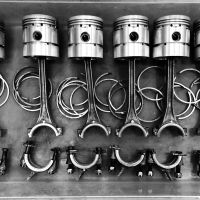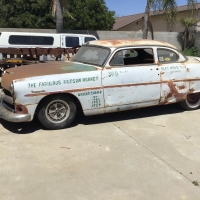1937 Hudson Brake System Restoration
While I’m at a stand still on the engine work for my 37 Hudson, I decided to start in on the brake system and need some direction.
A few years ago when I popped the master cylinder cap off, it was bone dry with surface rust. I started to add some fluid but stopped at 1/4 way up as I wasn’t sure it was the best thing to do. I don’t know if she ever had a full master cylinder or not when I bought her many years ago. Today when I push the brake pedal I moves an inch or two & is firm.
So where should I begin? Should I try to bleed the brakes to see what may leak? If so, how do I loosen the flathead screw to bleed it? I’m not really knowledgeable on the old brakes let alone this specific vehicle, so I could really use some direction here.
Im not sure the photo shows the color correct but at least it’s something.
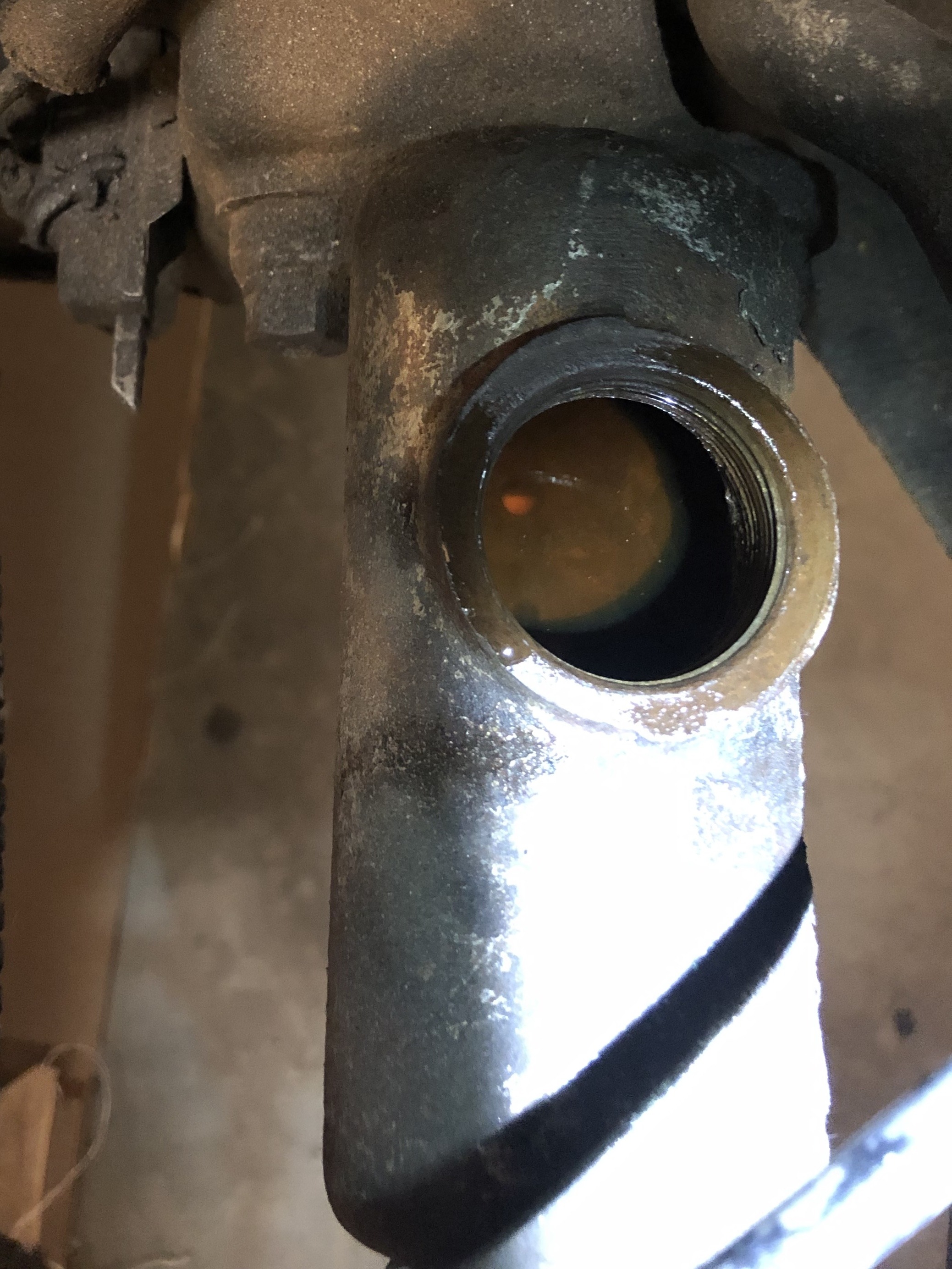
A few years ago when I popped the master cylinder cap off, it was bone dry with surface rust. I started to add some fluid but stopped at 1/4 way up as I wasn’t sure it was the best thing to do. I don’t know if she ever had a full master cylinder or not when I bought her many years ago. Today when I push the brake pedal I moves an inch or two & is firm.
So where should I begin? Should I try to bleed the brakes to see what may leak? If so, how do I loosen the flathead screw to bleed it? I’m not really knowledgeable on the old brakes let alone this specific vehicle, so I could really use some direction here.
Im not sure the photo shows the color correct but at least it’s something.

0
Comments
-
do you have any idea how long ago the car was last driven? Anyways, it's typical to find the wheel cylinder pistons stuck, and the cylinder bores pitted, and the rubber parts deteriorated. As en axample of what you might be able to do as a minimum, on my 51 that had been sitting for a couple decades, I bought a new master cylinder, and wheel cylinder kits, and rubber hoses. The wheel cylinders I used a hammer and blunt punch to knock the pistons out, and cleaned all the parts and honed the cylinders, and reassembled. The shoes and drums were in good condition, so I just reinstalled them, after packing the front bearings (being careful not to damage the seals so I could re use them). My master cylinder was rusted stuck, and new ones are available reasonable priced for the later cars.On yours, the first thing I would do is take things apart, and clean and inspect them carefully. Knowing how much pitting you can get away with is tricky...I expect folks will suggest that if there is any pitting at all, you need to replace or sleeve the cylinders. It's up to you, though.But if you have the engine apart still, you might want to finish that up before you take the brakes apart. You could just add fluid and bleed the brakes, they might or might not work, but if the pistons are stuck in the wheel cylinders it won't work well, even if it bleeds OK.0
-
She’s hasn’t been driven in 15+ years but 6 years ago I pulled her down the road to our current house. Since she’s up on jacks, I tried turning each wheel & found the drivers front wheel won’t budge. Then I had one of my kids push the brake pedal to see what that did to the other wheels & the other 3 wheels which spun would then stop.
I suppose the next step is to do as you did & open everything up & see if I can tell how everything is looking. Your right, I better just rebuild or replace all the wheel cylinders & master cylinder too. I’m wondering if new steel lines should be done with the new rubber lines? I definitely don’t want brake failure when she finally gets on the road!
0 -
I found in my old notes that there is a replacement master cylinder at NAPA (M4360). It sure looks like the same thing I have on my 37 Hudson. Maybe someone more knowledgeable could chime in on this...
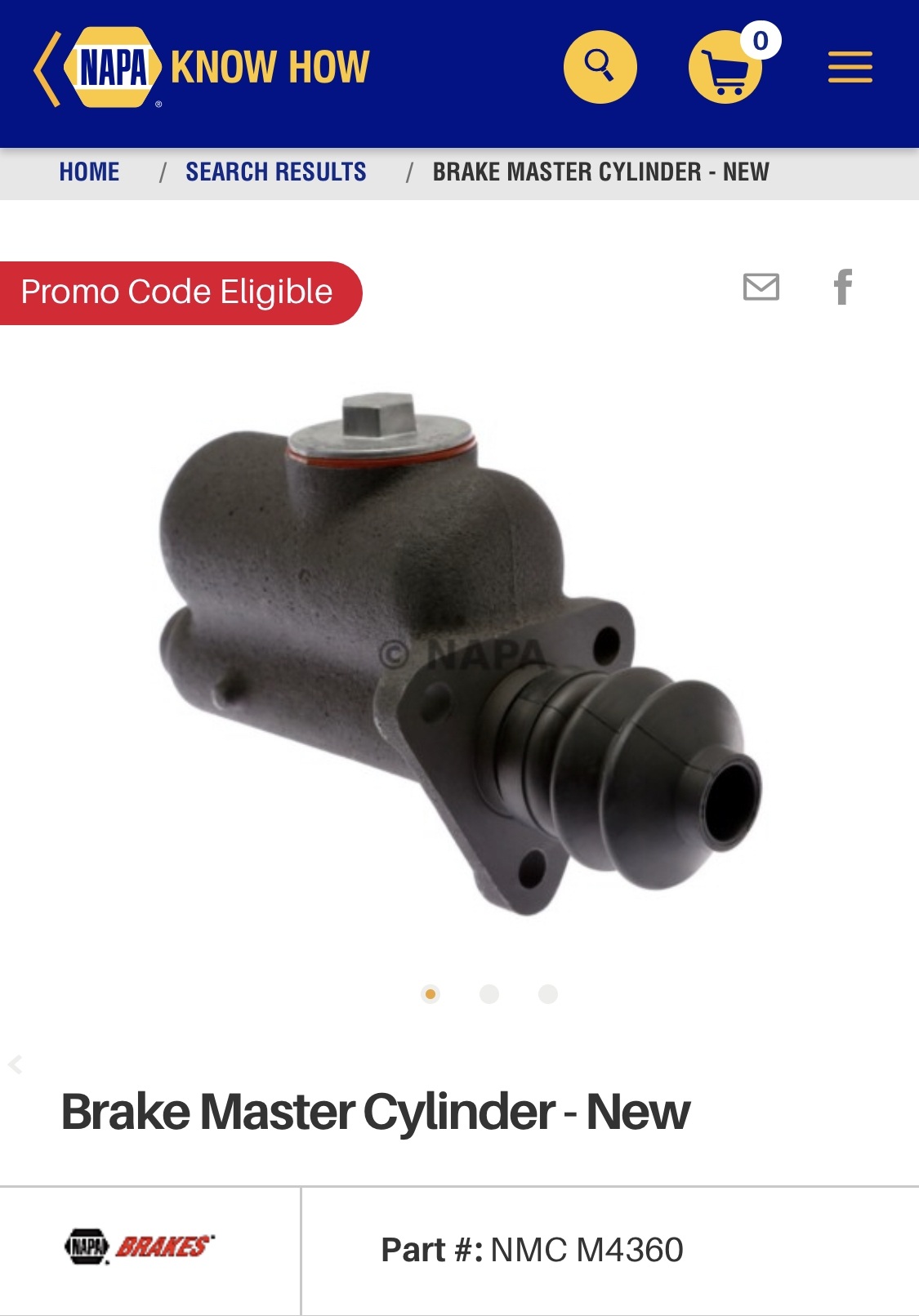
0 -
The steel lines may or may not need replacing, you can get an idea by looking at them and seeing how rusty they look, and also by your location, and where the car has been in the past. If it's evident that there are rust pits all over the underside of the car, then it would be wise to replace them. I've never had a need to replace metal lines on old cars here in Arizona, unless the line was damaged somehow.0
-
I used a brake cyl hone to do a light clean up on the wheel cyls. My car parts shop didnt have any of the rubbers - saying 1" wasnt good enough - they wanted a make. Next day an older man there said use 1956 to 1963 GM Holden rubbers. A lot of people pay through the nose to have the cyls resleeved. Ford master cyl ones are identical and cheaper on Feebay. My 37T had very badly rusted brake lines when I got it. Fluid was red in colour. A piece of copper pipe and hose was used as a joiner. When under the motor I looked up and saw a large part of the bottom of the cast inlet manifold was missing and sucking air - air filter was for decoration. Important to insulate the brake lines as they are too close to the exhaust pipe.0
-
Great advice! I put my hesitation aside & dove into the brakes this morning. I’ve sprayed them down with brake cleaner then took to dismantling them with photos to put it back together afterwards.
Can someone tell tell me what bolts to remove to get the wheel cylinder out?
Question: if I decided to remove the backing plate to restore & paint it, is it just the 4bolts? Anything to be aware of doing these things?
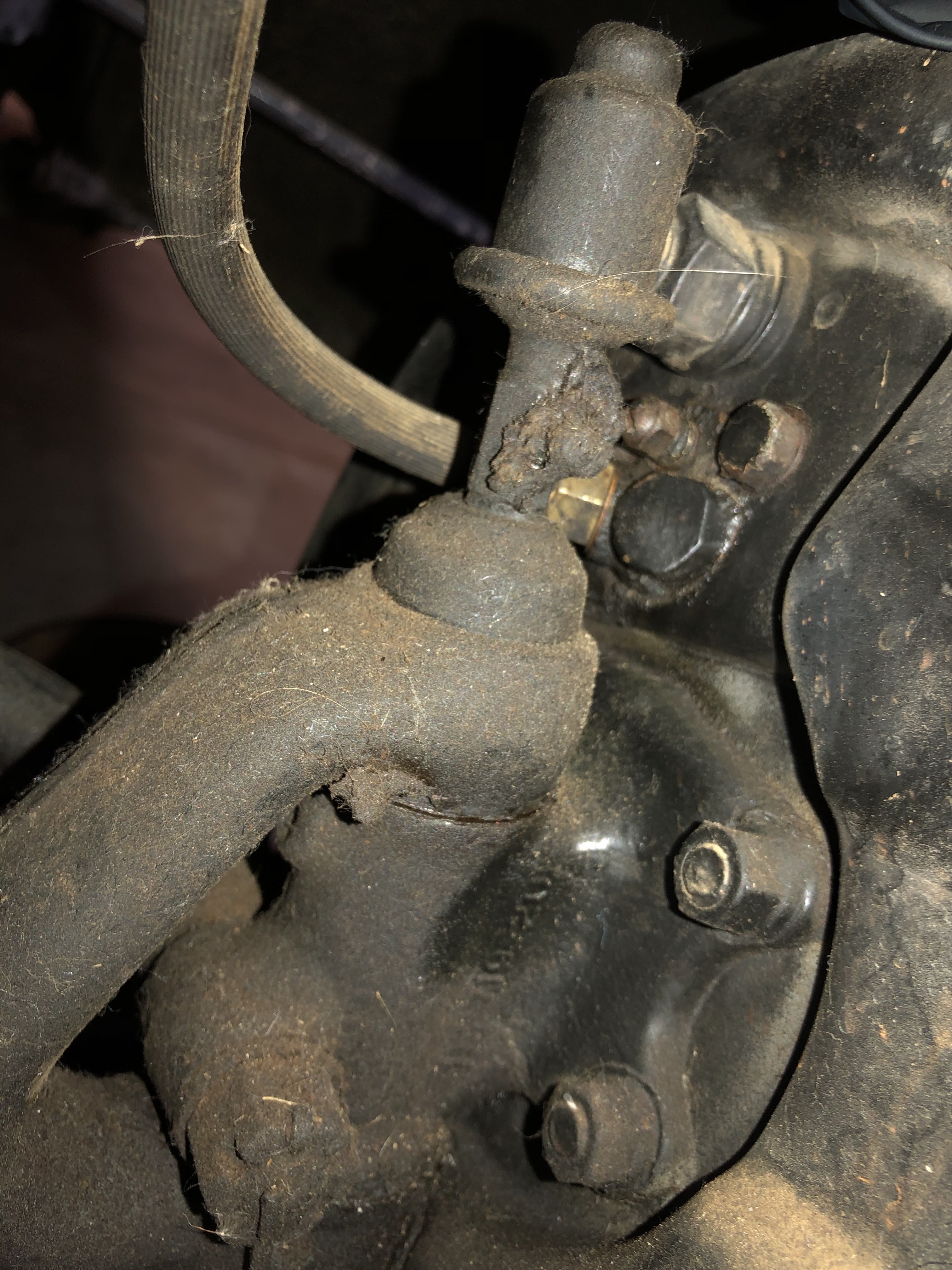
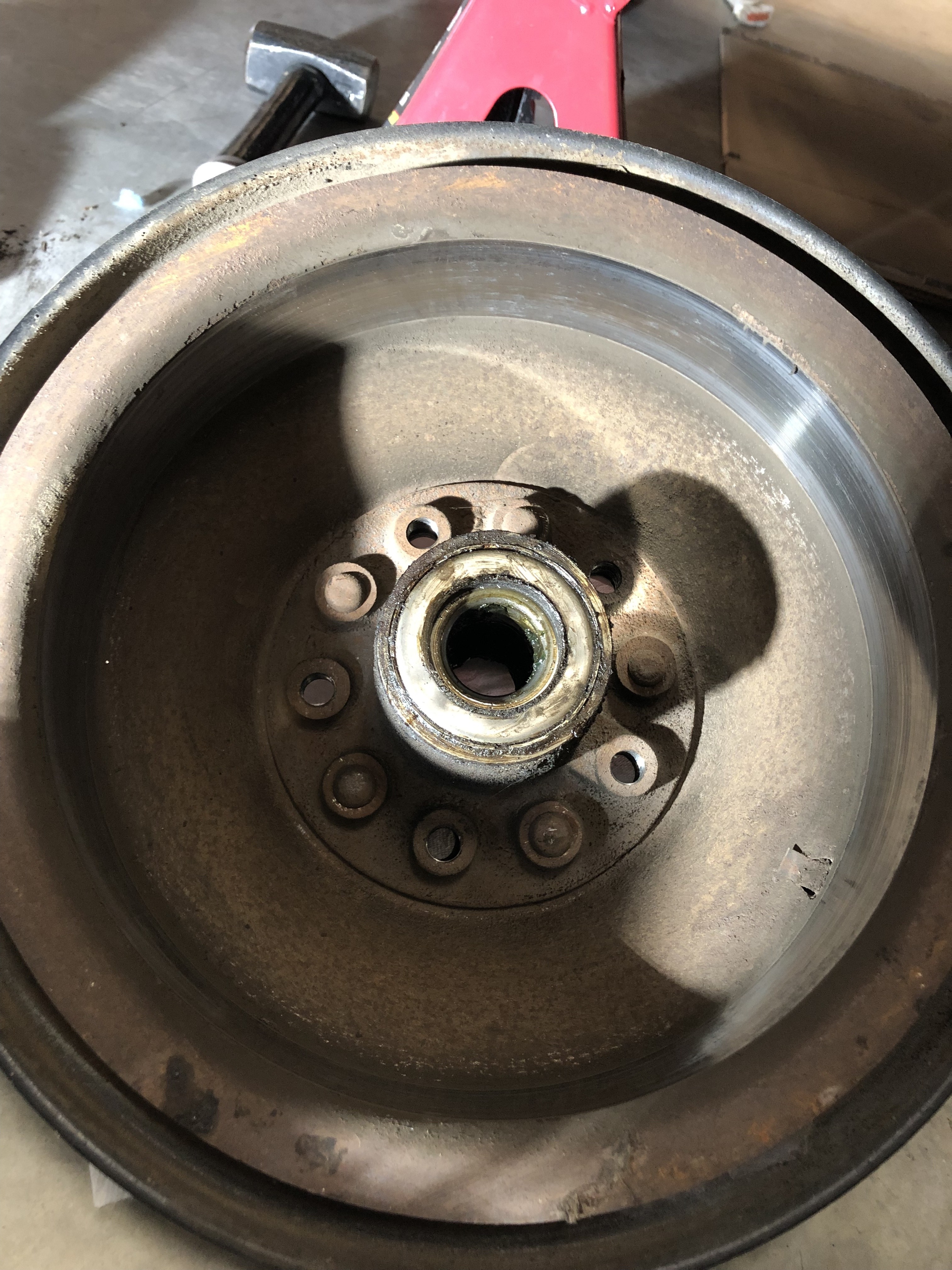
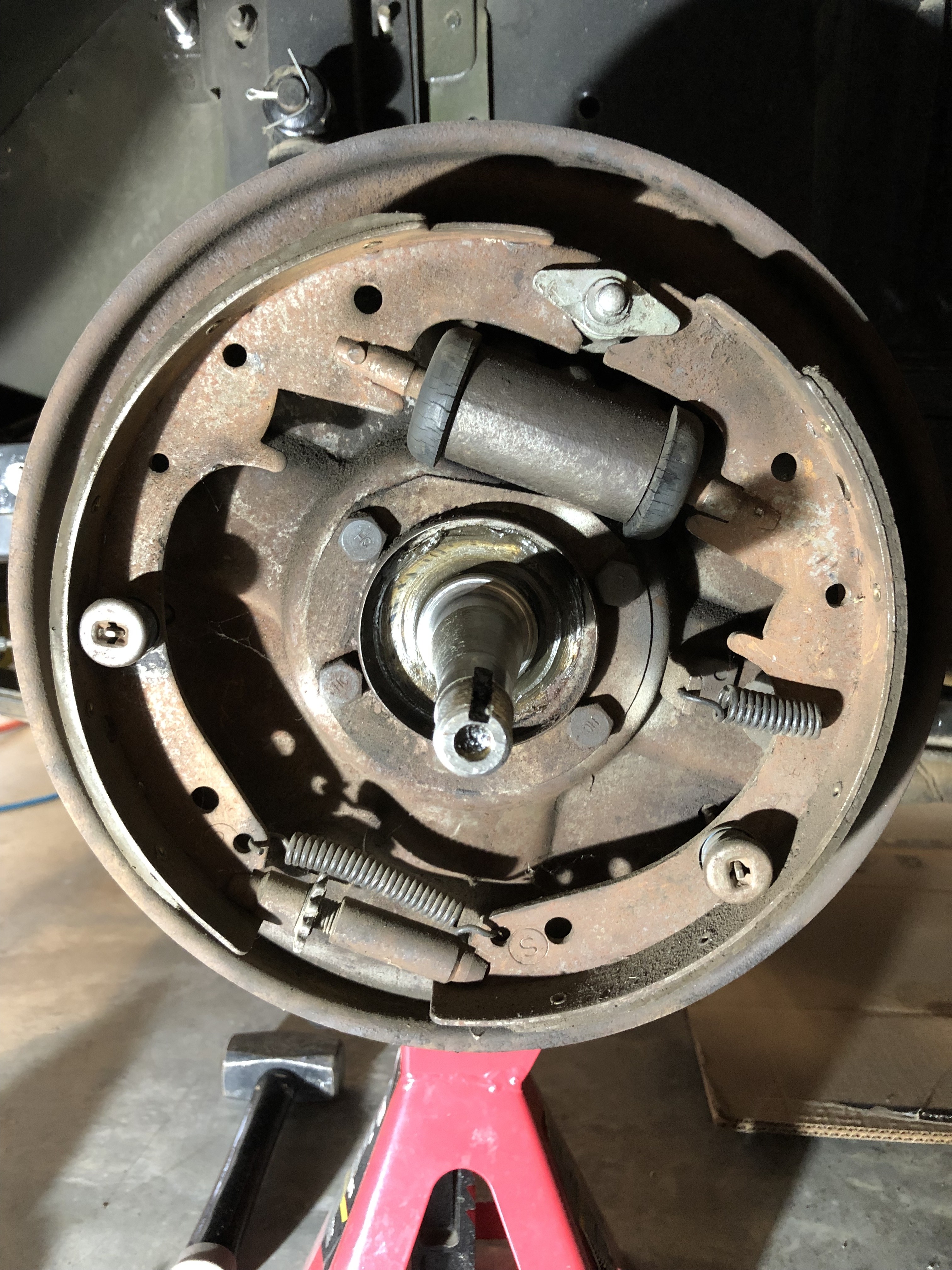
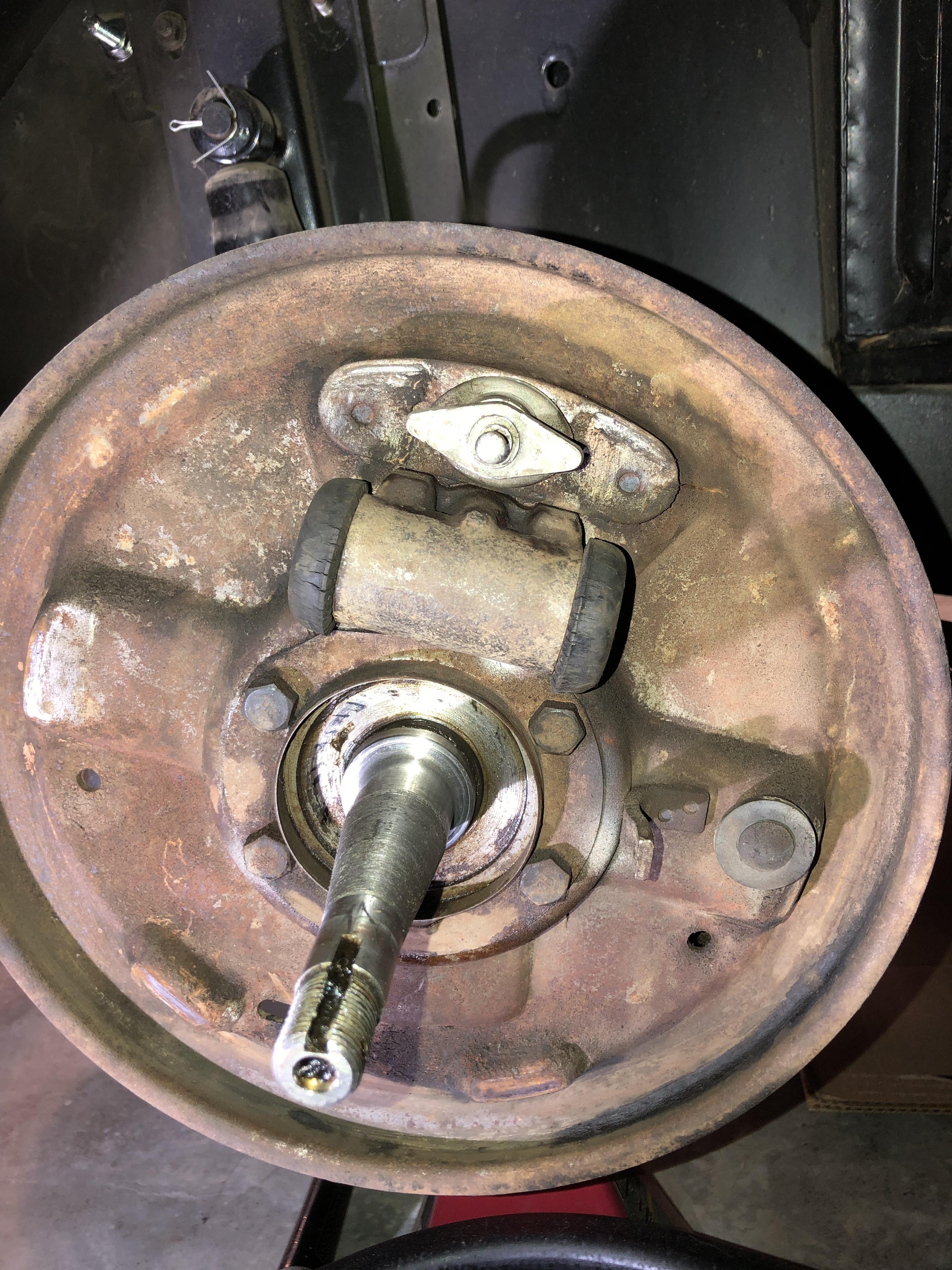
0 -
Two bolts. One on either side of the bleeder valve.0
-
Yep. You can see the cracked rubber on the boots. At least need to rebuild the wheel cylinders if not replace. Don't forget to replace the flex hoses, including the one in the back from the frame to the differential housing.
0 -
the bleeder has you confused...it has a slot head screw threaded into the end, to keep dirt out of it. You have to remove the screw before the bleeder will work, and it works by unscrewing it just a little bit, then push the brake pedal, then tighten it.you can probably just rebuild the wheel cylinders without removing them, too. And I would not paint the backing plates, and least not on the side that's inside the brake, there is no need, and any brake fluid that spills on to the paint will eat the paint off, and make it more ugly than if you had just left it alone.0
-
I’m gonna say this are probably the originals.... Anyone know how to open them up?
Lockheed’s original “Skunk Works”....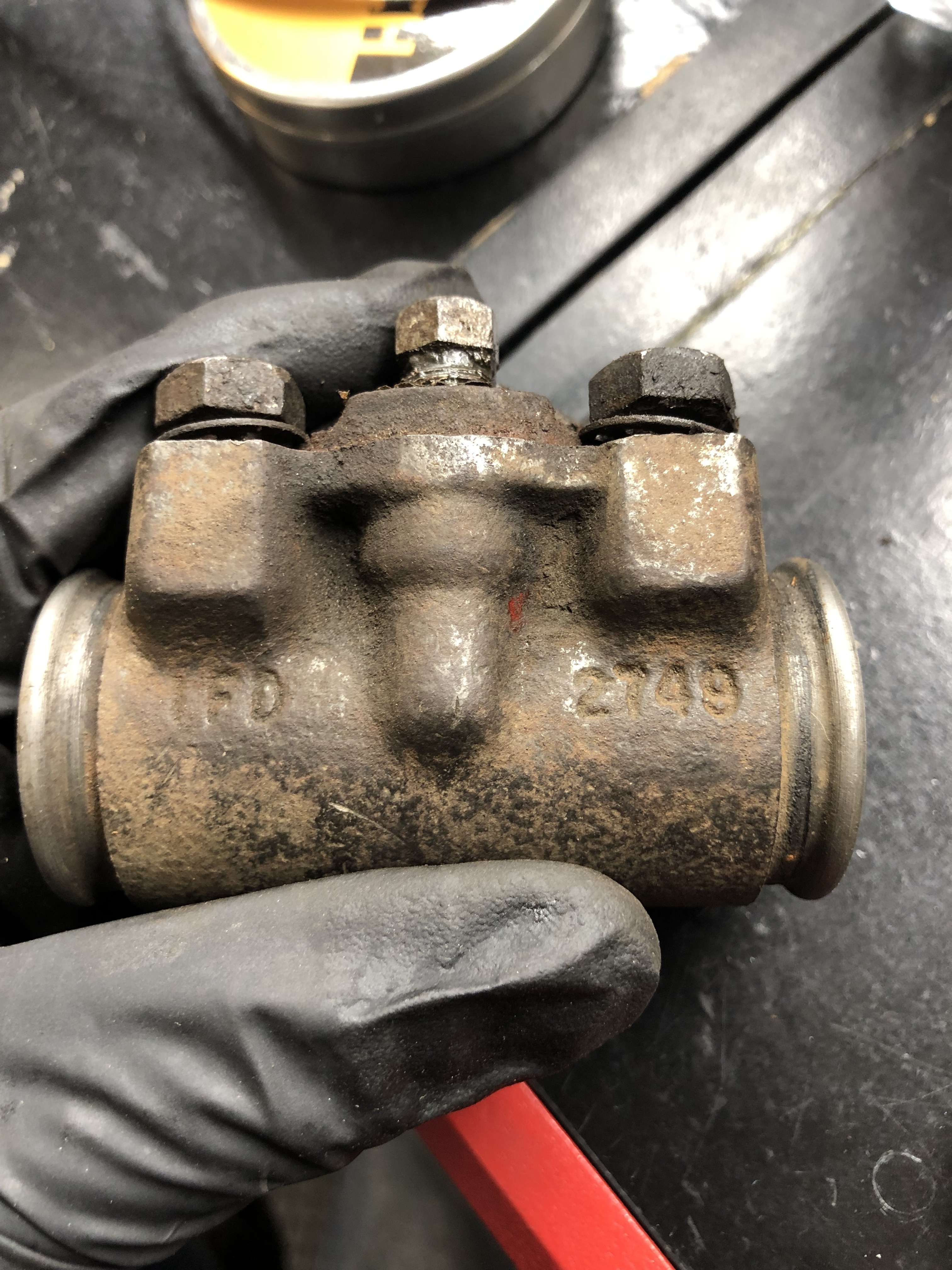
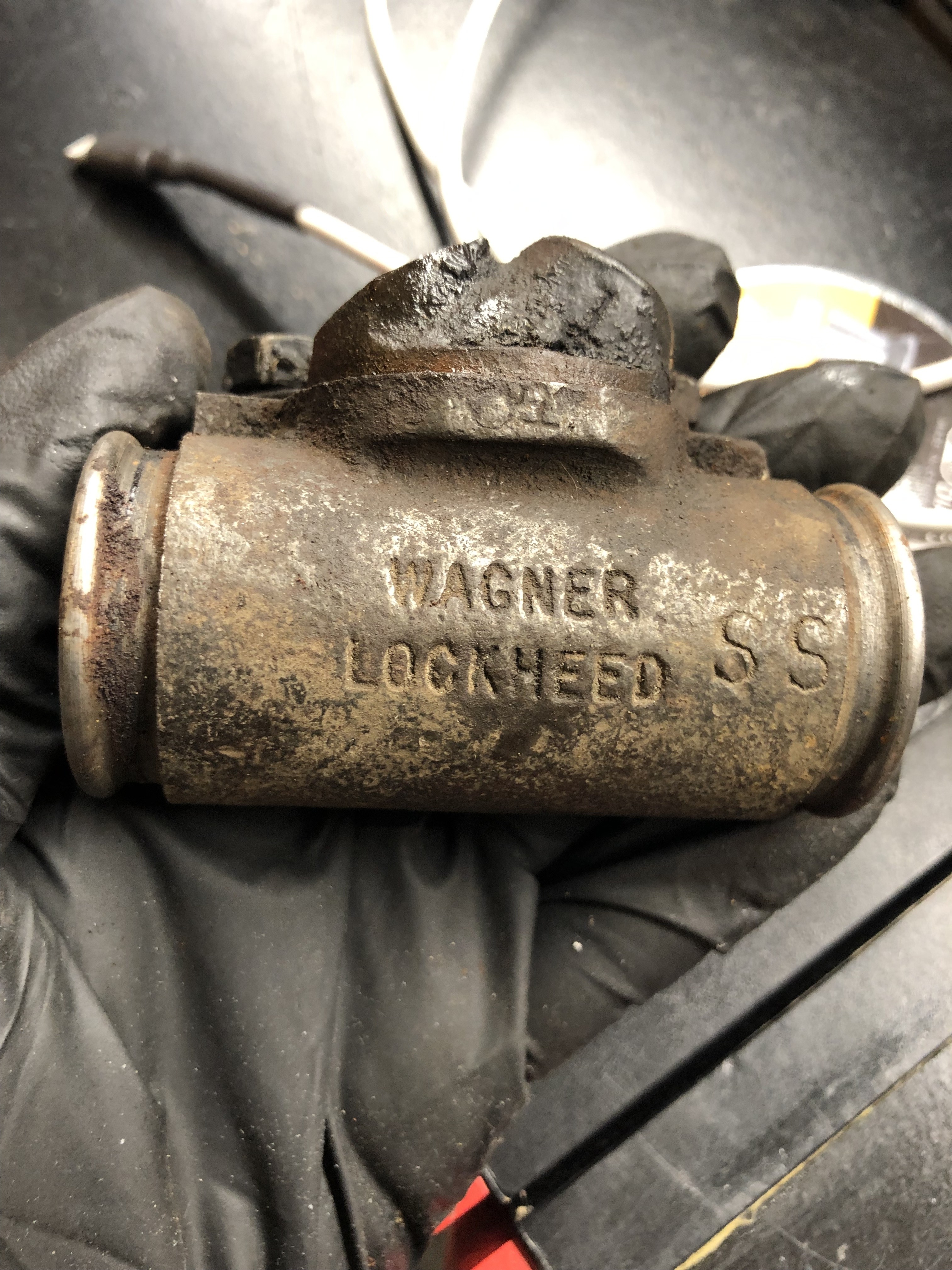
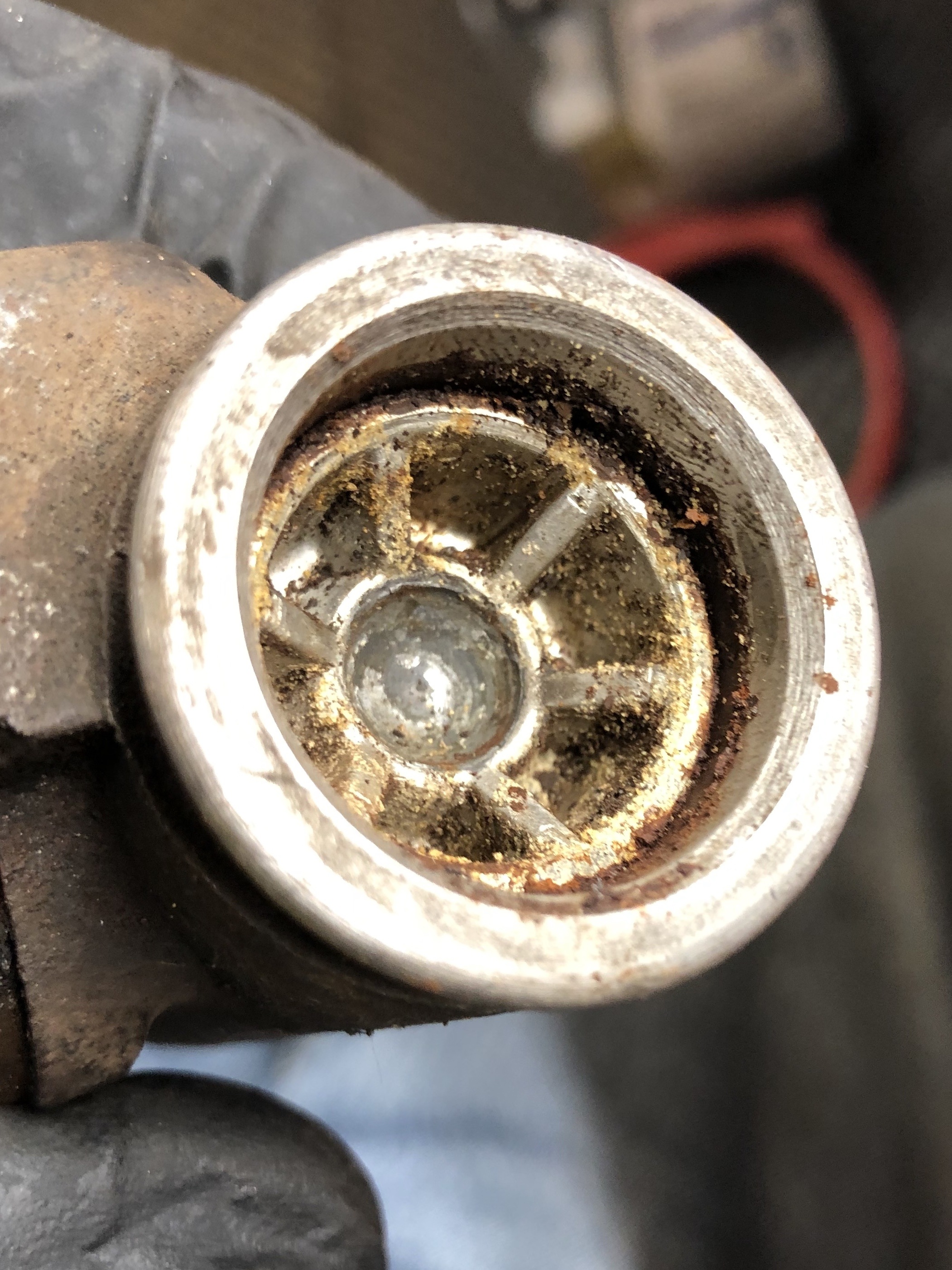

0 -
You have to push (drive) out the aluminum pistons. The bore is the same size all the way through, so it doesn't matter which way you go. You should get out two pistons, two seals, and a spring. spray it well with penetrating oil first, to lube it up good.0
-
The kits only come with the spring and the rubber parts, so try not to destroy the pistons, because you will need to use them again.0
-
Paul Schuster has new brake cylinders. Don't mess about with the old ones, will cost you three times a much to have them sleeved than to fit new ones.
0 -
as I said above "The wheel cylinders I used a hammer and blunt punch to knock the pistons out, "0
-
Another good option to try is to wrap the cylinder with a rag, loosen or remove the bleeder screw and SLOWLY add some air pressure. Usually one of the pistons will 'pop' out and the rag will catch it and any gunky fluid.
Jeff
0 -
that looks a bit too crusty for the compressed air trick to work...but you could try it.0
-
Well my hand caught 80% of the funky gunky fluid & the other 20% went spraying everywhere when the plugs came out! I was a little late to get the warning....
I used an 11/16” socket, the end your ratchet goes into & put it up against the aluminum plugs. After each one moved some, I chose an end to drive them both out. I will have to get someone’s better mechanic’s eyes on it but I thought it didn’t look half bad after cleaned up.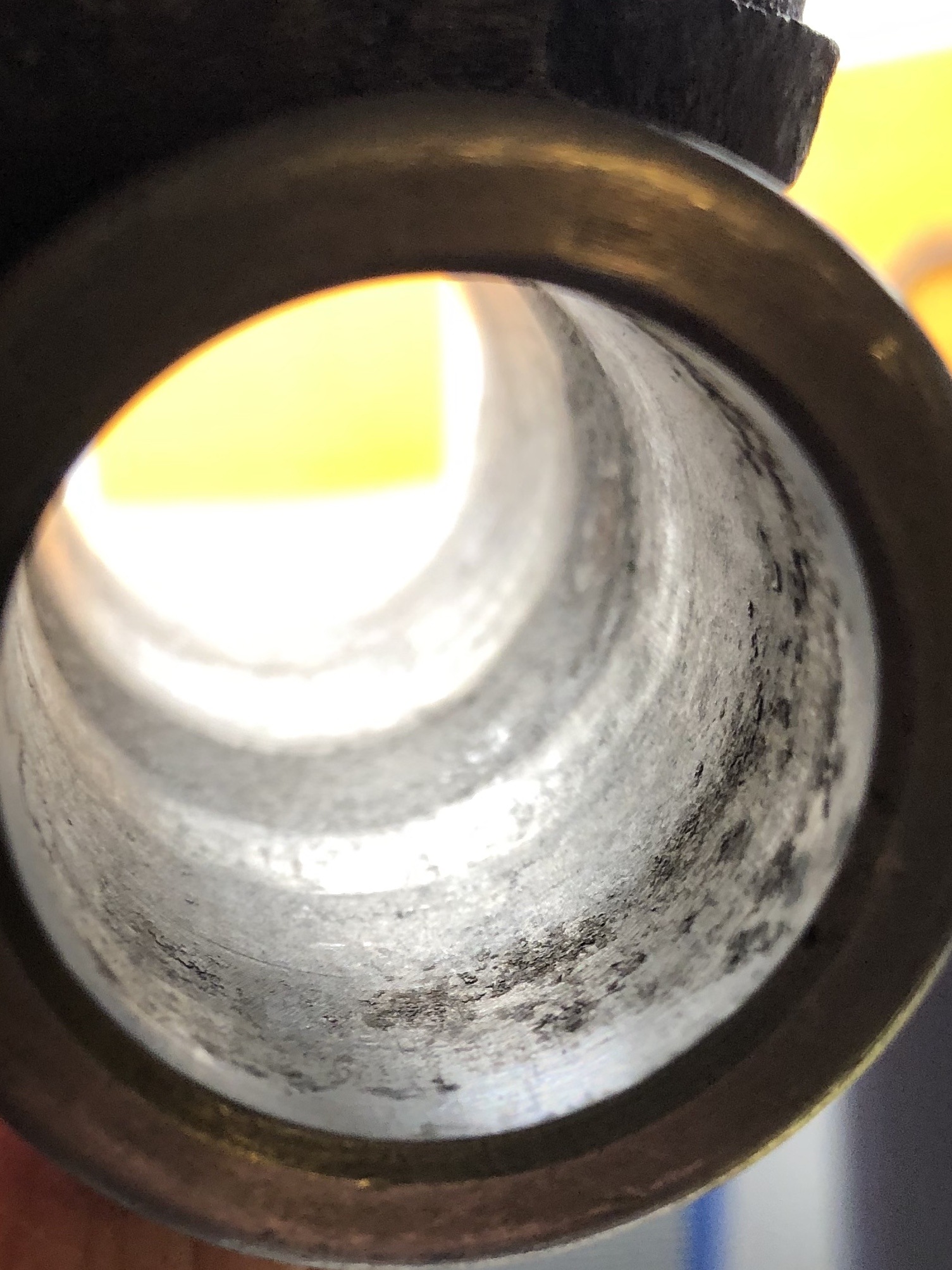
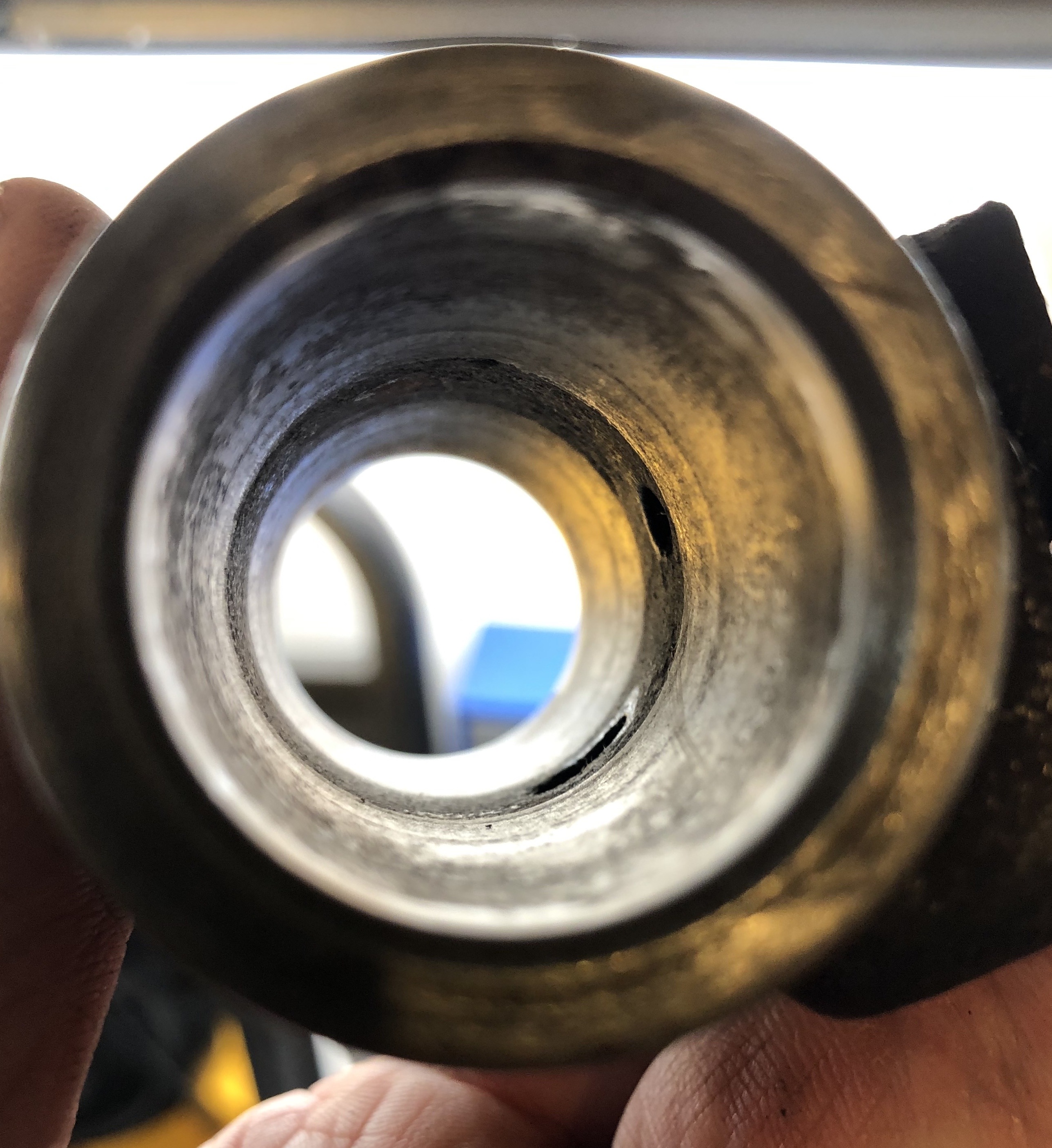
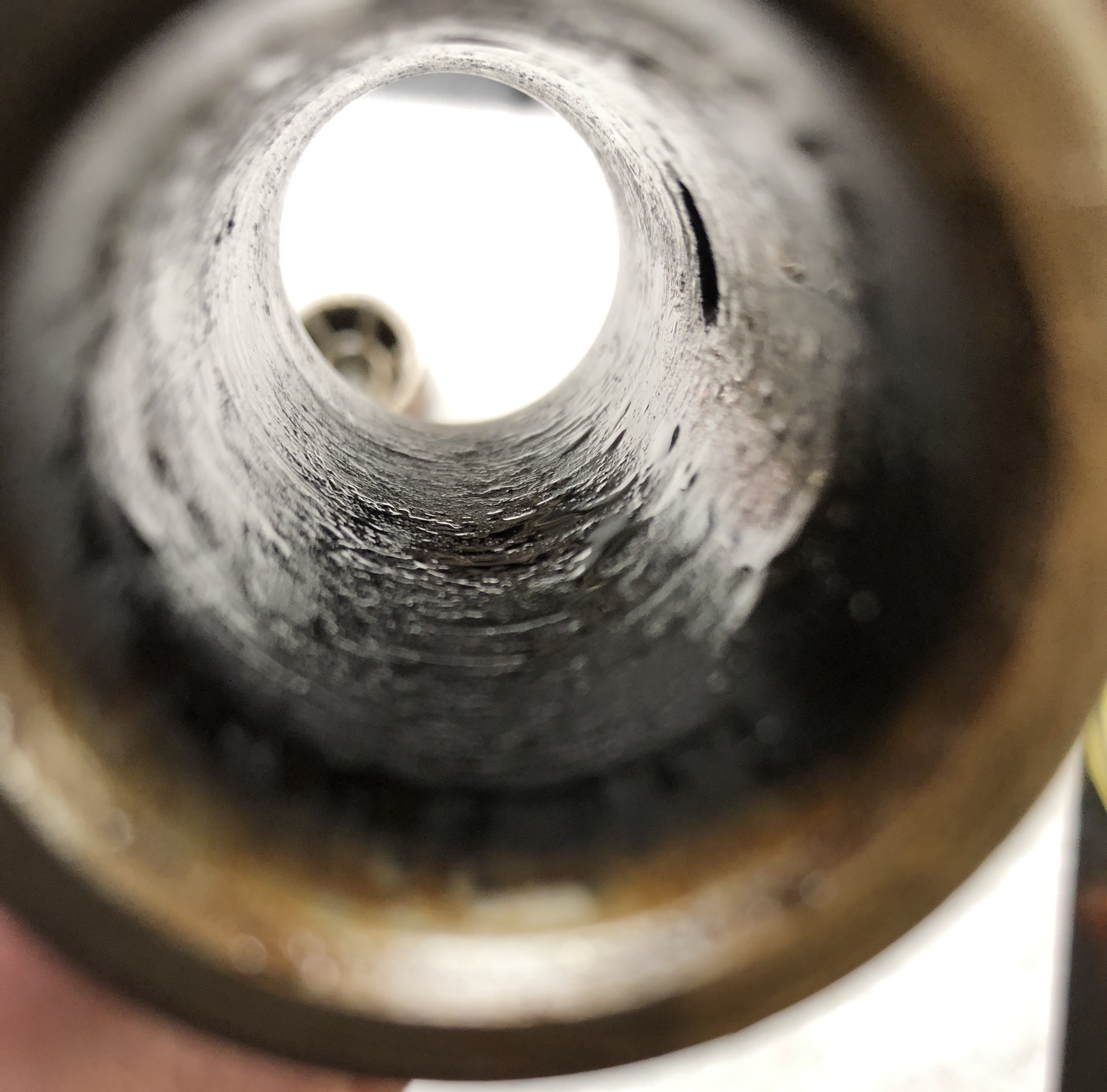
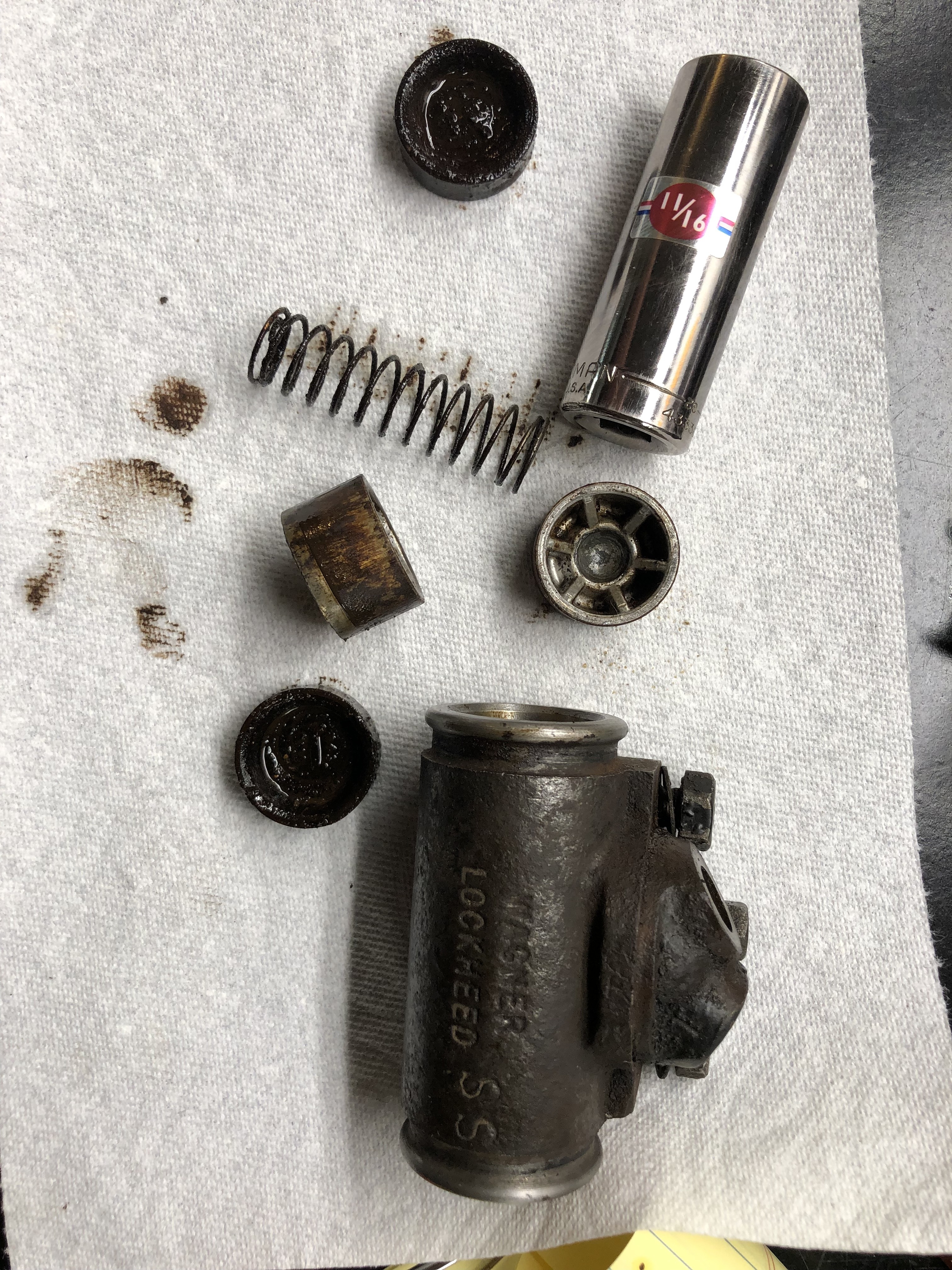
0 -
do you have a brake cylinder hone?0
-
They have to be perfectly smooth. Those are toast. It is not worth it to mess around with old defective brake parts. The new ones don't cost that much.0
-
I don’t have a hone but I do have new cylinders so I will put those in there. I may still hone them just to see if it can be done & to teach myself how to do it, another thing I haven’t learned yet....
If I didn’t mention it yet I did pick up a new Master Cylinder at NAPA a few days ago, I believe it was part number M4360 & comes up for an international. I haven’t checked the fit yet but I believe it’s the same bore. Here too I will try my hand at rebuilding the original one & keep as a back up.
Here’s a screenshot of the item: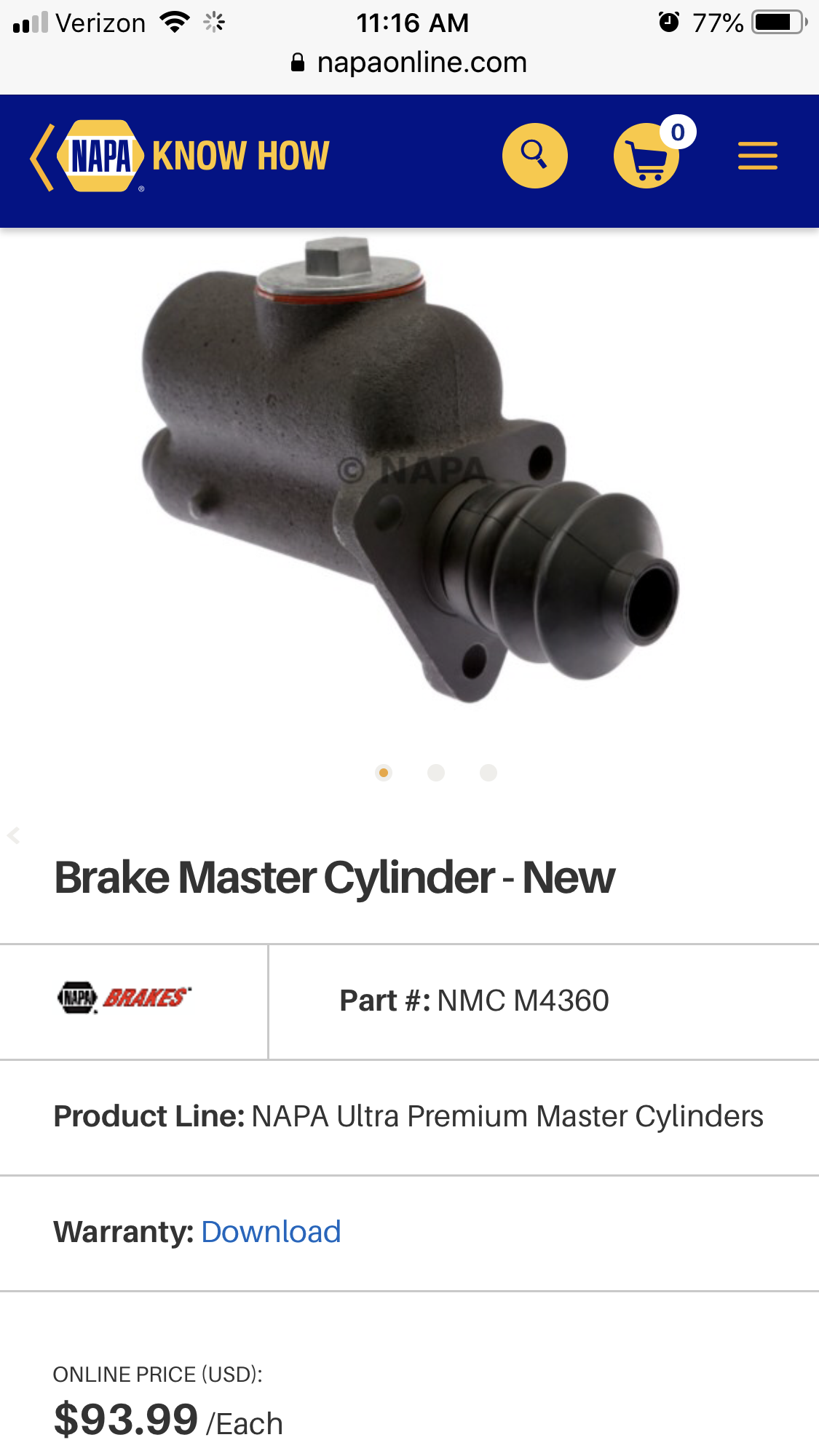
0 -
White post in Va. Rebuilds them they are sleeved with brass for years of smooth breaking0
-
Charles,
Thanks for the information, & out of curiosity I gave White Post Restorations a call this morning to find out about their service. While I feared it would be a $200 service, I was pleasantly surprised to hear it was $85 plus return shipping. That was fully restored to new including painting exterior, a Lifetime Warranty & fully tested for operation & performance before shipping. Honestly that’s not bad if someone is wanting to keep as many components original as possible, especially given the piece of mind that their testing gives one to know it works without any issues for decades to come.
https://whitepost.com/brake-sleeving-rebuilding-services/
0 -
Which Brake Fluid to use???
I have always used dot 3&4 fluid & from researching things this morning I’m still thinking I best stay away from silicone brake fluid. I’ve recently heard of Castrol’s LMA (synthetic) Fluid & wondered if anyone had experience with it? Is there a brake fluid I’ve missed which maybe highly recommended?0 -
Hey BigSky,
that $85, is that for all 4, or just 1?
Jeff
0 -
I converted to silicone in the 1990's, in my '37, and have had no problem with it.
0 -
I just use normal brake fluid, and it works. I guess there's probably some reason to use something else, but that reason probably has little to do with being able to stop your car.0
-
Dot 50
-
Dot 5 won't ruin paint. Dot 3 & 4 will. If it is a new and/or rebuilt system use dot 5 and it is purple so you can see the difference. Do not mix 3 or 4 with 50
-
Jjbubaboy, that was for the price of one wheel cylinder. To never have a wheel cylinder fail from corrosion or to keep a rare vehicle completely “pebble beach” concourse original condition, it’s not bad at all.
There is a Castrol brake fluid with “LMA” which is a low moisture absorbing fluid. Thats the benefit of dot 5, preventing rusting rusty components. I’m very surprised to hear it’s purple because in 2013 the government banned ATE Super blue brake fluid from the US market place, they require brake fluid to be clear or amber only!
It’s always surprised me how much settlement gets in to my “modern” cars brake reservoir over the years & I flush every 2-3 years.0 -
Just as a side idea. I have rebuilt and resleeved many wheel cylinders, mostly for
cylinders that are odd ball that cannot be bought. Lots of times I have to save the
plungers but high pressure air pressure does not work. I do not want to hammer them out as I do not want to damage them. So I have adapted a grease fitting to the bleed screw and force it out with a grease gun. Works every time.
Ivan L.
0
Categories
- 36.9K All Categories
- 112 Hudson 1916 - 1929
- 20 Upcoming Events
- 92 Essex Super 6
- 28.6K HUDSON
- 571 "How To" - Skills, mechanical and other wise
- 995 Street Rods
- 151 American Motors
- 178 The Flathead Forum
- 49 Manuals, etc,.
- 78 Hudson 8
- 44 FORUM - Instructions and Tips on using the forum
- 2.8K CLASSIFIEDS
- 608 Vehicles
- 2.1K Parts & Pieces
- 77 Literature & Memorabilia
- Hudson 1916 - 1929 Yahoo Groups Archived Photos
